Included
3 Nights Accommodation at 5* hotel with breakfast.Nile Palace or Sonesta st George
Tour to Hatshepsut Temple, Valley of the Kings &Valley of Queens
Tour to Karnak Temple & Luxor Temple.
Tour to Habu Temple, Valley of Nobles & Deir el Madina
Tour to Dendera and Abydos
English speaking professional tour guide.
Shopping through famous Bazaars.
The assistance of our personal during tours
Bottled water during your trip.
Pick up services from your hotel & return.
Lunch at Local restaurant( vegetarian food is available)
Entrance fees
All transfers by air-conditioned vehicle
Accommodation at 5* hotel with breakfast.Nile Palace or Sonesta st George
Tour to Hatshepsut Temple & Valley of the Kings.
Tour to Karnak Temple & Luxor Temple.
English speaking professional tour guide.
Shopping through famous Bazaars.
The assistance of our personal during tours
Bottled water during your trip.
Pick up services from your hotel & return.
Lunch at Local restaurant( vegetarian food is available)
Entrance fees
All transfers by air-conditioned vehicle
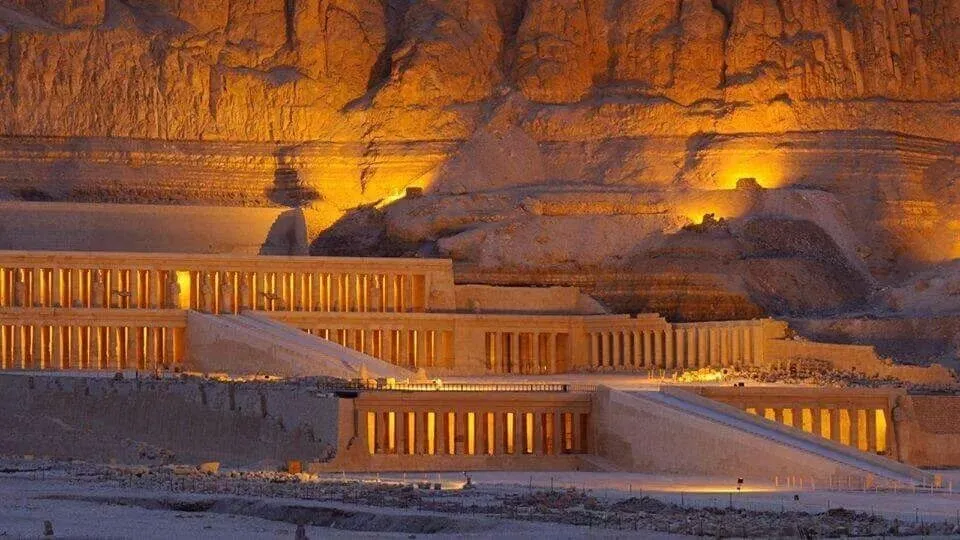


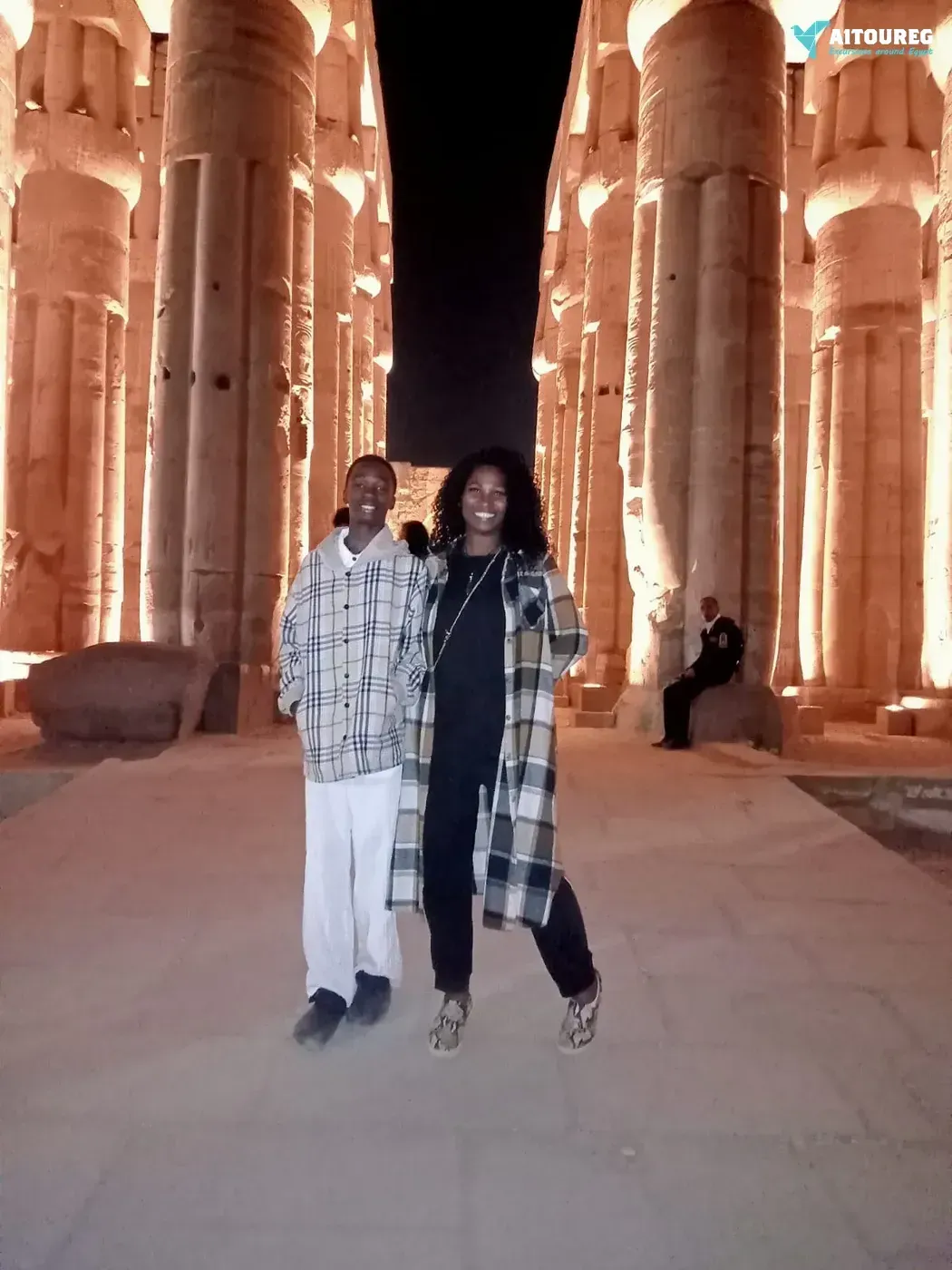
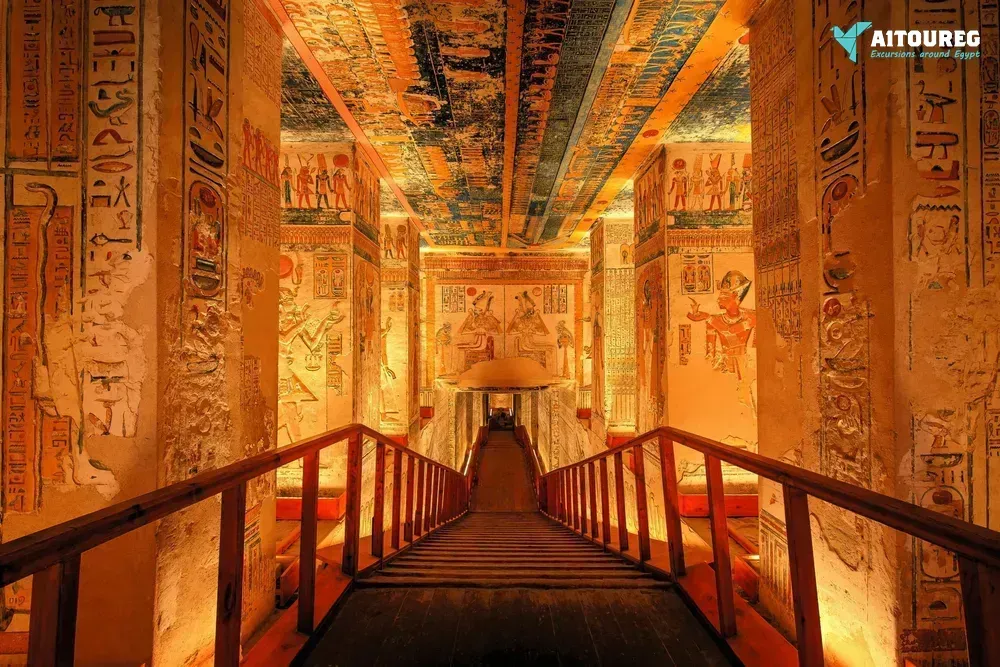

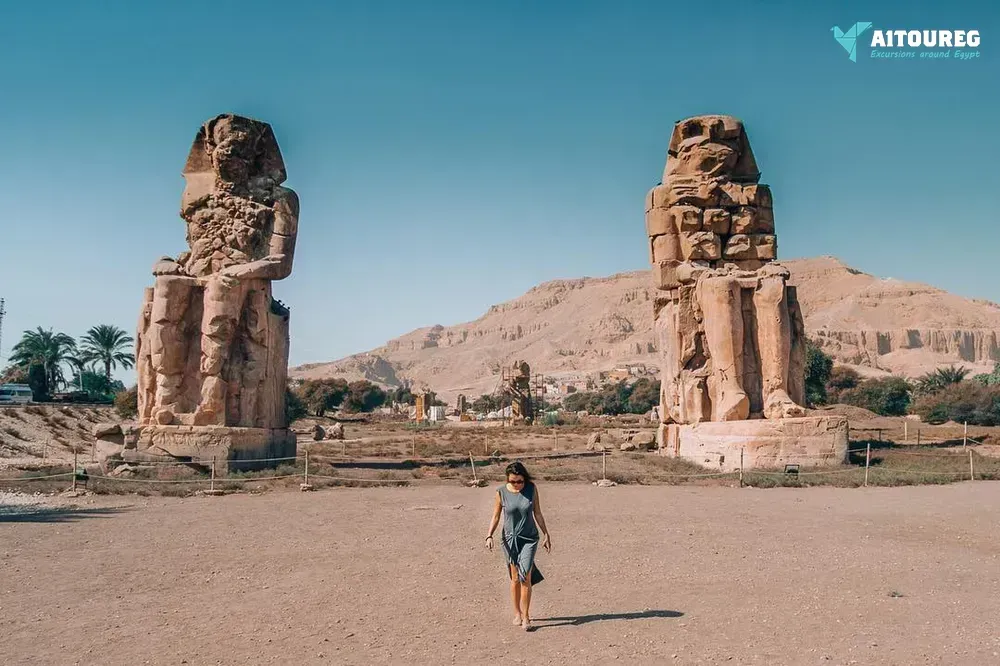

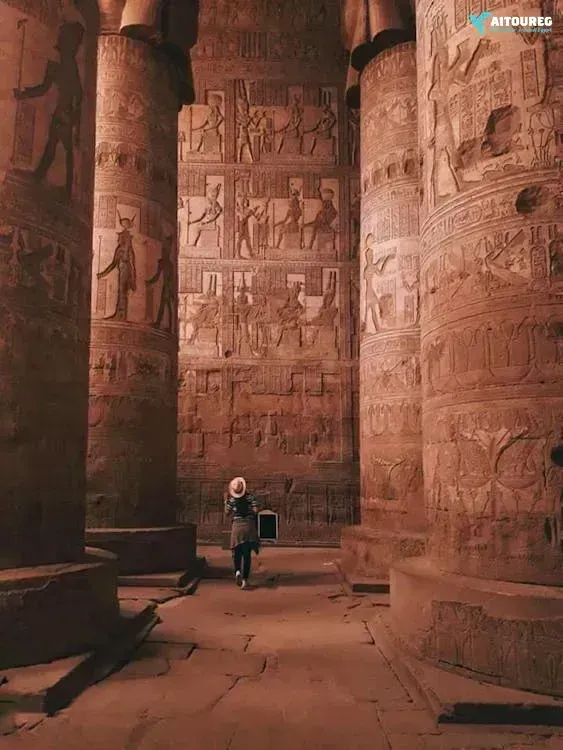

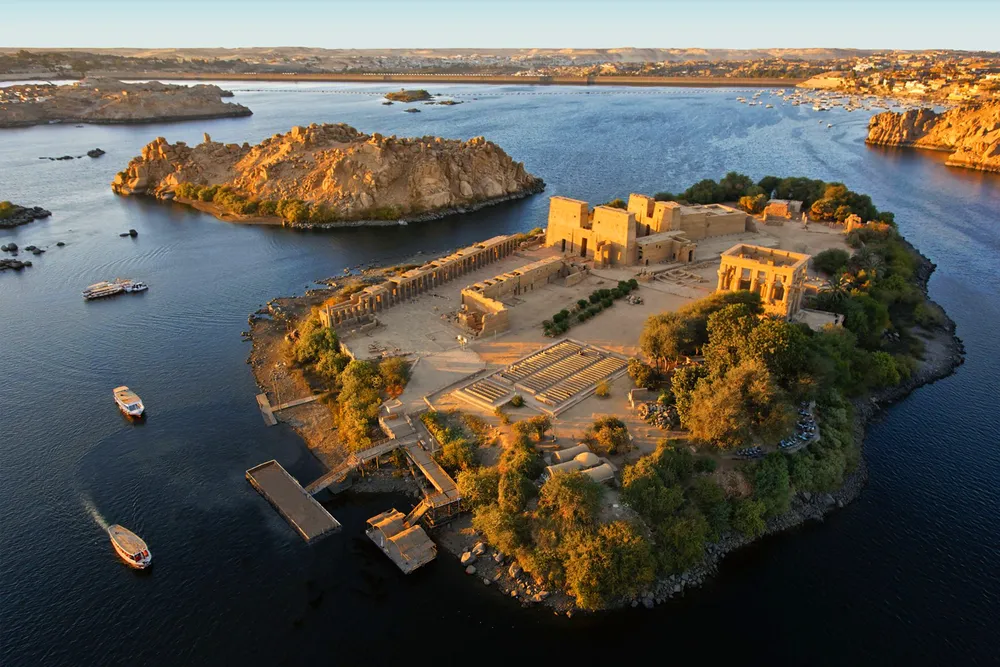

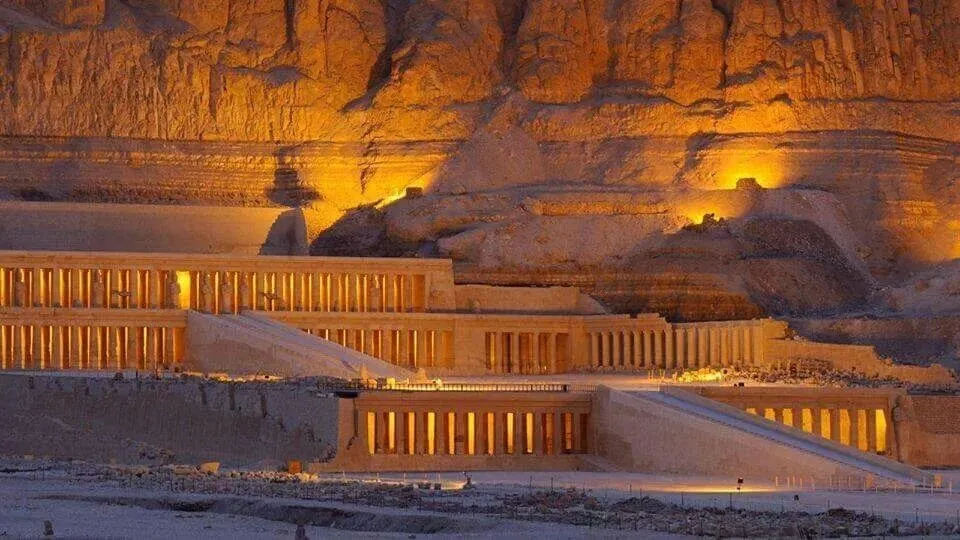

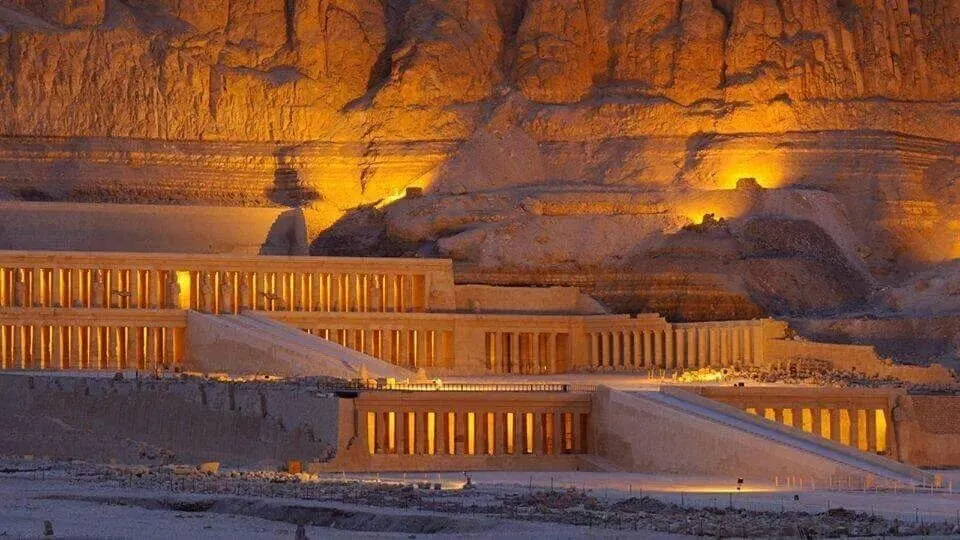
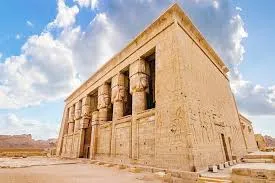
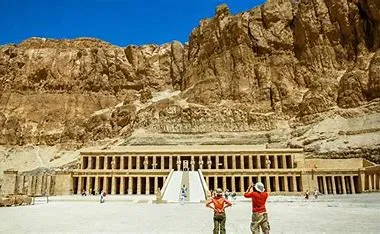
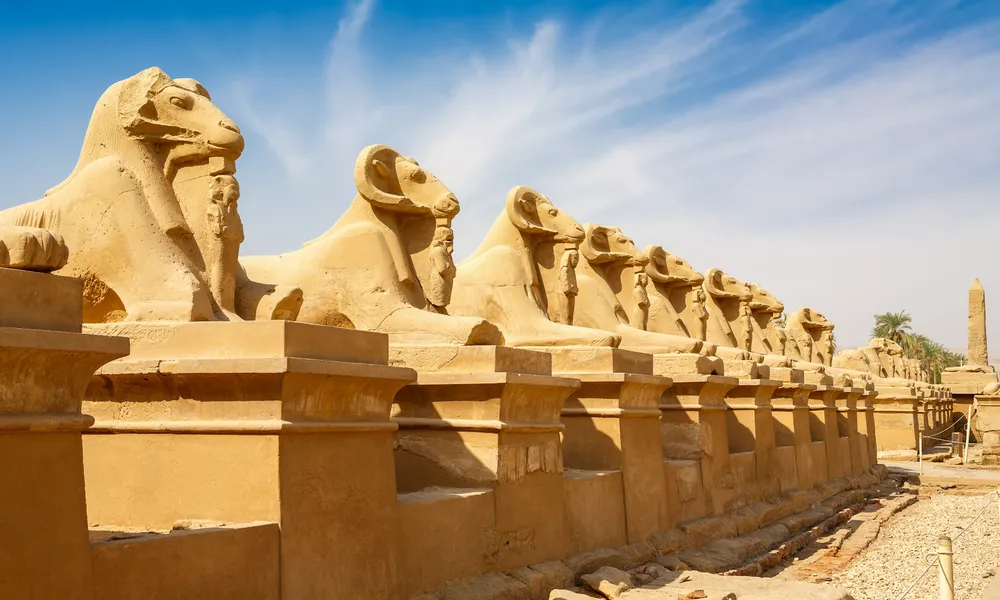

1) Day 1-Karnak temple and Luxor temples
Early morning, we will pick you up from your hotel in Sahel Hasheesh by a private A.C. Car to be transferred to Luxor for an overnight trip to Luxor from Sahel Hasheesh . Upon arrival you will meet your private tour guide who will join you to visit: Karnak Temple : No site in Egypt is more impressive than Karnak
Temple : No site in Egypt is more impressive than Karnak  . It is the largest temple complex ever built by man and represents the combined achievement of many generations of ancient builders and pharaohs. The Temple of Karnak
. It is the largest temple complex ever built by man and represents the combined achievement of many generations of ancient builders and pharaohs. The Temple of Karnak  is actually three main temples, smaller enclosed temples, and several outer temples situated on 247 acres of land. Luxor Temple: The Temple of Luxor was the center of the most important festival, the festival of Opet. Built largely by Amenhotep III and Rameses II , the temple's purpose was as a setting for the rituals of the festival. The festival was to reconcile the human aspect of the ruler with the divine office. Lunch will be served in a local restaurant in Luxor . On the Evening you can enjoy An Optional Tour Sound and Light Show at Karnak
is actually three main temples, smaller enclosed temples, and several outer temples situated on 247 acres of land. Luxor Temple: The Temple of Luxor was the center of the most important festival, the festival of Opet. Built largely by Amenhotep III and Rameses II , the temple's purpose was as a setting for the rituals of the festival. The festival was to reconcile the human aspect of the ruler with the divine office. Lunch will be served in a local restaurant in Luxor . On the Evening you can enjoy An Optional Tour Sound and Light Show at Karnak  : The show starts with a historical introduction covering the birth of the great city of Thebes and erection of the Karnak
: The show starts with a historical introduction covering the birth of the great city of Thebes and erection of the Karnak  Temple . The show narrates the glorious achievements of some great Pharaohs as you listen to a magnificent and poetic description of the artistic treasures and great legacy which the Karnak
Temple . The show narrates the glorious achievements of some great Pharaohs as you listen to a magnificent and poetic description of the artistic treasures and great legacy which the Karnak  temple encloses.
temple encloses.
Overnight at Nile Palace Luxor Or Sonesta St George
2) Day 2- The valley of the kings
Breakfast at your hotel then you will be accompanied by your private tour guide and a private air-conditioned vehicle to visit: The Valley of Kings: The final resting place of Egypt's rulers from the 18th to 20th dynasty, it is home to tombs including the great pharaoh Ramses II and boy pharaoh Tutankhamen . he tombs were well stocked with all the material goods a ruler might need in the next world. Most of the decoration inside the tombs still well preserved. Hatshepsut Temple: It is one of the most beautiful & best preserved of all of the temples of Ancient Egypt. The temple was built on three levels with two wide ramps in a central position joining the levels together. Colossi of Memnon: Two massive stone statues of king Amenhotep III are the only remains of a complete mortuary temple.
The statues are made from blocks of quartzite sandstone which exist in Cairo then moved 700 KM to Luxor The valley of The Queens The Valley of the Queens, also known as Biban el-Harim, Biban el-Sultanate, and Wadi el-Melikat, is a place in Egypt where wives of Pharaohs were buried in ancient times. In ancient times, it was known as Ta-Set-Neferu, meaning - 'the place of the Children of the Pharaoh', because along with the Queens of the 18th, 19th and 20th dynasties (1550-1070 BCE) many princes and princesses were also buried with various members of the nobility. One of the most well-known tombs is that of Nefertari, the best-loved of Ramesses II's numerous wives. In her honor, he built a beautiful temple at Abu Simbel. Lunch will be served in a local restaurant in Luxor , Overnight in Luxor
3) Day 3-Deir el Madina Ramseum and Habu temple
Early morning, we will pick you up from your hotel in Sahel Hasheesh by a private A.C. Car to be transferred to Luxor for an overnight trip to Luxor from Sahel Hasheesh . Upon arrival you will meet your private tour guide who will join you to visit: Madinat Habu temple : In ancient times Madinat Habu was known as Djanet and according to ancient belief was the place was Amun first appeared. Both Hatshepsut and Tuthmosis III built a temple dedicated to Amun here and Later Rameses III constructed his larger memorial temple on the site. Ramsseum: Ramesseum, funerary temple of Ramses II (1279–13 BC), erected on the west bank of the Nile River at Thebes in Upper Egypt. The temple, famous for its 57-foot (17-meter) seated statue of Ramses II (of which only fragments are left), was dedicated to the god Amon and the deceased king. The walls of the Ramesseum, which is only about half preserved, are decorated with reliefs, including scenes depicting the Battle of Kadesh, the Syrian wars, and the Festival of Min Deir El Madina The main cemetery of the royal workmen at Deir el-Medina is situated to the west of the village, on the slope of the Theban hills. Most of the tombs were built during the 19th dynasty. Some of them are impressive in their decoration and size. By the time of the 20th dynasty, the tombs had been turned into family tombs in which the descendants of the original owners were buried. Little alterations were made apart from the addition of another subterranean burial chamber. The lower courses of the eastern hill of Qurnet Murai were the site of burials of babies and children. More than a hundred children were buried in common domestic pottery jars or amphorae, in baskets, even fish baskets, in chests, boxes, or in proper coffins there. The poorest burials were those of still-born babies. They contained no jewelry or amulets, only small vessels filled with food for the afterlife. The adults' graves were situated higher up. Many of these graves date from the 18th dynasty
Lunch During the tour. Overnight in Luxor
4) Day 4-Dendera and Abydos
Pick up from your hotel in Luxor and drive to Dendera temple Dendera temple The Temple of Hathor was largely constructed during the Late Ptolemaic period, specifically during the reign of Ptolemy XII and Cleopatra VII. Later additions were made during the Roman period. Although built by a dynasty of rulers who were not native Egyptians themselves, the design of this temple has been found to be in accordance to that of other classical Egyptian temples, with the exception of the front of the hypostyle hall, which, according to an inscription above the entrance, was constructed by Emperor Tiberius. Apart from these, there are also scenes in the temple complex portraying the Ptolemaic rulers. For example, carved onto the external face of one of the temple walls is a huge relief of Cleopatra VII and her son by Julius Caesar and co-ruler, Ptolemy XV (better known as Caesarion). The two Ptolemaic rulers are shown dressed in Egyptian garb, and offering sacrifices. Hathor was also regarded as a goddess of healing, and this is evident in the presence of a sanatorium in the temple complex. Here, pilgrims would come to be cured by the goddess. Sacred water (which was made holy by having it poured onto statues inscribed with sacred texts) was used for bathing, unguents were dispensed by the priests of Hathor, and sleeping quarters were provided for those hoping that the goddess would appear in their dreams, and so aid them. Drive to Abydos temple from Dendera temple Abydos temple Considered one of the most important archaeological sites of Ancient Egypt, the sacred city of Abydos was the site of many ancient temples, including Umm el-Qa'ab, a royal necropolis where early pharaohs were entombed. These tombs began to be seen as extremely significant burials and in later times it became desirable to be buried in the area, leading to the growth of the town's importance as a cult site. Today, Abydos is notable for the memorial temple of Seti I, which contains an inscription from the nineteenth dynasty known to the modern world as the Abydos King List. It is a chronological list showing cartouches of most dynastic pharaohs of Egypt from Menes until Ramesses I, Seti's father. The Great Temple and most of the ancient town are buried under the modern buildings to the north of the Seti temple. Many of the original structures and the artifacts within them are considered irretrievable and lost; many may have been destroyed by the new construction. Abydos temple Located about 2.5 hours by car north of Luxor , Abydos was one of the most important religious sites to ancient Egyptians. Much like modern Muslims hope to complete a pilgrimage to Mecca at least once in their lifetime, ancient Egyptians would have hopes to visit Abydos, which for them was strongly associated with the entrance into the afterlife. Although there were several temples constructed here, the largest and most significant is known as the Temple of Seti I. Seti I was the father of the great Ramesses II, who actually completed the construction of most of the temple after his father’s death.
Coming to power only 30 years after the upheaval associated with Akhenaten’s heretical rule, known as the Amarna Period, Seti I was concerned with reestablishing faith in the pantheon of Pre-Amarna gods that Akhenaten had sought to destroy. As a result, the temple he built contains small chapels dedicated to each of the major gods: Ptah, Re-Harakhte, Amun-Re, Osiris, Isis, Horus, and also one to Seti himself. Much of the temple complex is no longer present, including the pylon and the first two courtyards so visitors to enter through a doorway into the hypostyle hall. Many of the wall reliefs inside are well preserved and the reliefs toward the back of the temple, completed during Seti’s reign, are considered to be among the finest in any temple throughout Egypt. Drive to your hotel in Sahel Hasheesh